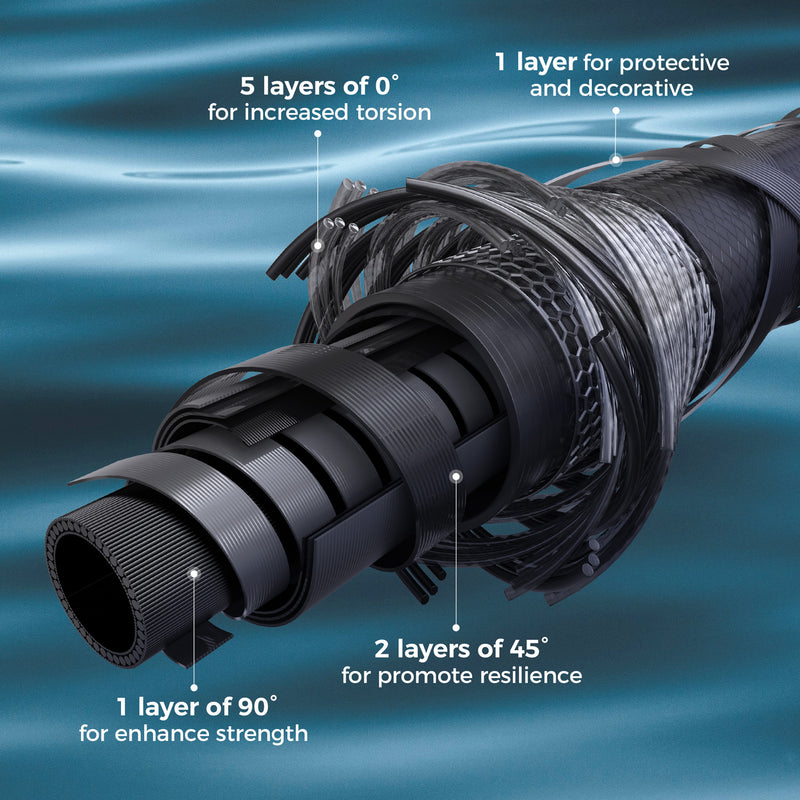Unlock Your Fishing Adventure: Discover the Perfect Rod for Every Beginner!
Fishing is more than just a hobby; it's an opportunity to connect with nature, unwind, and create lasting memories. For beginners, the journey often starts with the exciting prospect of casting a line into the water for the very first time. However, before you can reel in that big catch, choosing the right fishing rod is crucial. A suitable fishing rod not only enhances your experience but also increases your chances of success on the water. In this article, we aim to guide you through the process of selecting the perfect fishing rod tailored to your needs, ensuring that you embark on your fishing adventure with confidence and excitement.

Understanding Fishing Rod Basics
When it comes to fishing rods, beginners should familiarize themselves with the different types available. The most common types are spinning rods, casting rods, and fly rods. Spinning rods are versatile and easy to use, making them ideal for beginners. They are designed for lighter lures and are great for freshwater fishing. Casting rods, on the other hand, are typically used for heavier lures and are favored by anglers targeting larger species. Fly rods are specialized for fly fishing and require a different casting technique, making them less suitable for beginners but worth understanding as you progress. Each type of rod serves a unique purpose, so knowing your options is crucial.
Key components of fishing rods include length, material, action, and power. The length of the rod can influence casting distance and control; a longer rod can cast farther but may be harder to handle. Materials like graphite and fiberglass determine the rod's sensitivity and durability. Action refers to how much the rod bends when pressure is applied, while power indicates the rod's strength. Beginners should opt for rods that offer a medium action and medium power, as they provide a good balance for various fishing situations. By understanding these basics, you'll be better equipped to choose a rod that suits your fishing style.
Choosing the Right Fishing Rod for Beginners
Selecting the right fishing rod can feel overwhelming, but it doesn't have to be. Start by considering the type of fishing you'll be doing—whether it's freshwater or saltwater, as this influences the rod you choose. For freshwater fishing, a medium spinning rod is often a great choice for beginners, as it's versatile enough to catch a range of species like bass or trout. If you’re venturing into saltwater fishing, look for rods that are specifically designed to withstand the harsher conditions, often made from materials resistant to corrosion.
Your target species plays a significant role in determining the best rod. If you're aiming for larger fish, you'll need a rod with more power. Additionally, personal preferences such as weight and grip comfort should not be overlooked. It’s essential to hold the rod in-store to ensure it feels right in your hands. Beginners generally benefit from rods in the 6-7 foot range, as they provide a good combination of casting distance and control. Remember, the right rod enhances your experience and makes it easier to develop your skills.
Where to Buy Fishing Rods for Beginners
Finding a good place to buy fishing rods can be crucial for making the right decision. Ensure that you compare different retailers, both online and local, to find the best options. It’s important to read reviews and research the specifications of different rods, as this can help you make an informed choice. Many sporting goods stores offer a fantastic selection of fishing rods, allowing you to see the goods firsthand and feel the difference.
Additionally, attending local fishing expos and community events can be a fantastic way to explore options and get recommendations from experienced anglers. Take the time to speak with staff in-store, as they can provide valuable insights and advice based on your needs.
Essential Accessories for Beginners
Once you've chosen your fishing rod, it's important to consider other essential gear that will enhance your fishing experience. A good quality reel is crucial, as it plays a significant role in how smoothly you can cast and retrieve your line. Pairing your rod with an appropriate fishing line is also vital; beginners should opt for monofilament lines as they are easier to handle and forgiving. Tackle, such as hooks, sinkers, and lures, will depend on your target species and fishing technique. Accessories like a tackle box to keep everything organized will make your outings much more enjoyable. These items complement your fishing rod and are just as essential to your overall fishing success.
Summary of Key Takeaways
In summary, the right fishing rod is an essential investment for any beginner looking to dive into the world of fishing. By understanding the basics of fishing rods, choosing the right one based on your fishing style, and being mindful of where you purchase your gear, you'll set yourself up for a rewarding experience. Don't forget the importance of essential accessories that will further enhance your fishing adventures. So grab your rod, embrace the thrill of fishing, and embark on a journey filled with excitement, relaxation, and the joy of nature. Your fishing adventure awaits!








